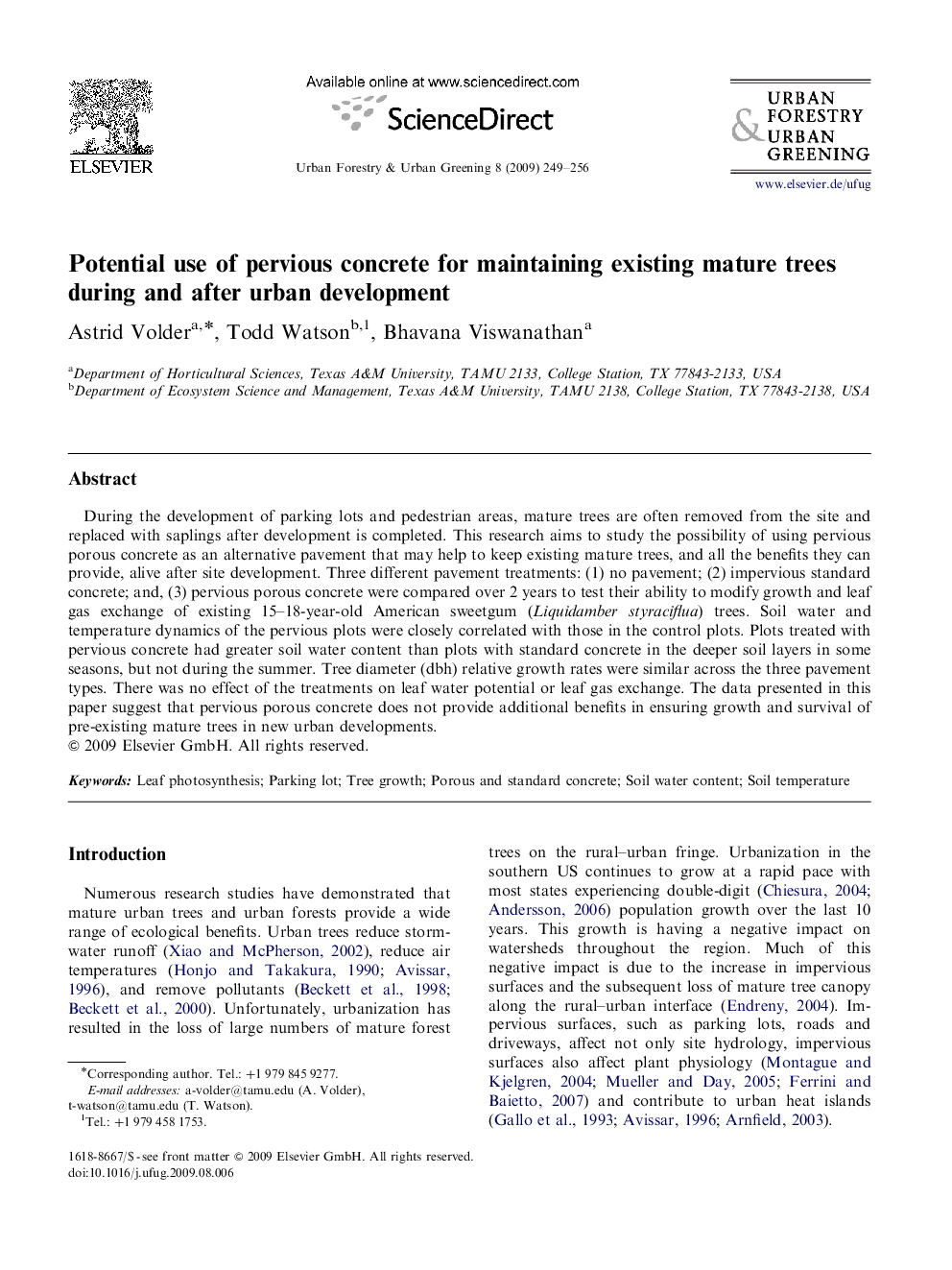| Article ID | Journal | Published Year | Pages | File Type |
|---|---|---|---|---|
| 94165 | Urban Forestry & Urban Greening | 2009 | 8 Pages |
During the development of parking lots and pedestrian areas, mature trees are often removed from the site and replaced with saplings after development is completed. This research aims to study the possibility of using pervious porous concrete as an alternative pavement that may help to keep existing mature trees, and all the benefits they can provide, alive after site development. Three different pavement treatments: (1) no pavement; (2) impervious standard concrete; and, (3) pervious porous concrete were compared over 2 years to test their ability to modify growth and leaf gas exchange of existing 15–18-year-old American sweetgum (Liquidamber styraciflua) trees. Soil water and temperature dynamics of the pervious plots were closely correlated with those in the control plots. Plots treated with pervious concrete had greater soil water content than plots with standard concrete in the deeper soil layers in some seasons, but not during the summer. Tree diameter (dbh) relative growth rates were similar across the three pavement types. There was no effect of the treatments on leaf water potential or leaf gas exchange. The data presented in this paper suggest that pervious porous concrete does not provide additional benefits in ensuring growth and survival of pre-existing mature trees in new urban developments.
